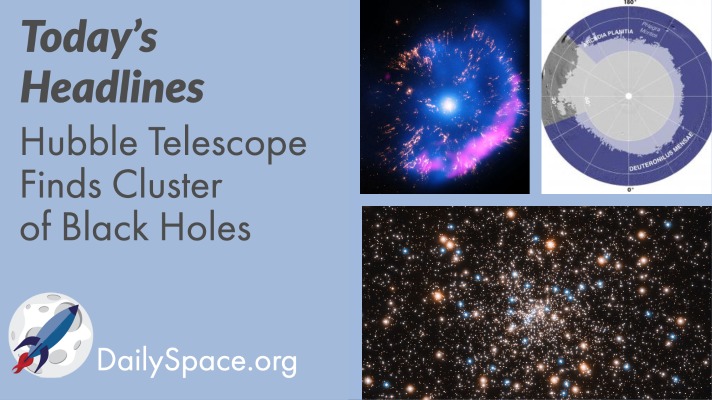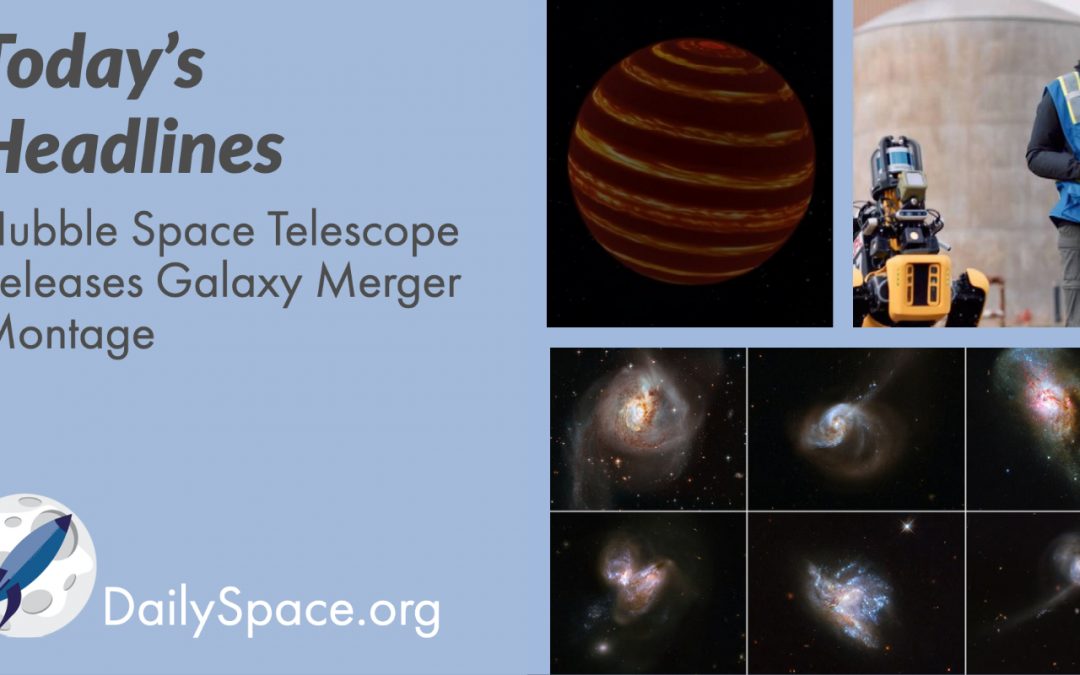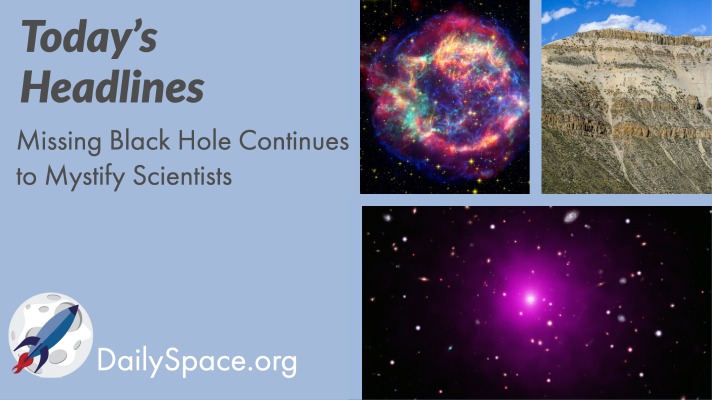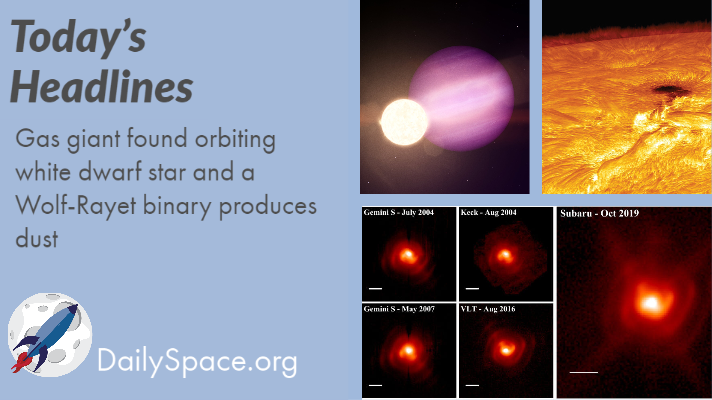
Feb 22, 2021 | Black Holes (Stellar), Daily Space, Exoplanets, Galaxies, Guest Interview, Mars, Milky Way, Our Solar System, Supernovae, White Dwarfs
While searching for an intermediate-mass black hole, scientists instead found a cluster of smaller black holes in the globular cluster NGC 6397. Plus, supernovae, meteorites, and an interview about mapping water ice on Mars with guests Gareth Morgan and Than Putzig from the Planetary Science Institute.

Jan 9, 2021 | Asteroids, Brown Dwarf, Crewed Space, Daily Space, Exoplanets, Galaxies, Mars, Nebulae, Observatories, White Dwarfs
Hubble celebrates the new year with a release of six gorgeous galaxy mergers, imaged as a part of their investigation into star formation rates in such systems. Plus, a weird nebula, a big flare from a tiny star, wind on a brown dwarf, and more.

Dec 21, 2020 | Curiosity, Daily Space, Earth, ESA, Galaxies, Mars, Neutron Stars / Pulsars, Stars, Supermassive Black Holes, Supernovae, White Dwarfs
A massive black hole should be in the galaxy cluster Abell 2261. Observations with Chandra and Hubble haven’t located it. Plus, classifying supernovae with AI, neutron stars, the lithium composition problem, and more planetary science.

Sep 17, 2020 | Daily Space, Exoplanets, Gemini North, Guest Interview, Stars, The Sun, White Dwarfs
Join us today as we take a look at today’s top story – a planet has been found still in orbit around its white dwarf star even after a supernova. Then we discuss how a Wolf-Rayet binary system is a dust factory. Finally, new works show neutron stars are NOT producing all those heavy elements, the solar minimum is over, Plus special guest, Sara Seager from MIT.

Aug 3, 2020 | Daily Space, Galaxies, Neutron Stars / Pulsars, Our Solar System, Quantum, Stars, Supernovae Remnants, White Dwarfs
Join us today as we look at how quantum mechanics and Einstein’s theory of general relativity work together in white dwarfs. Machine learning is used to find a galaxy with an extremely low abundance of oxygen. Scientists find signs of a neutron star in supernova 1987A. And researchers managed to locate two recently arrived meteorites in Australia with the help of fireball detection cameras.

Jul 23, 2020 | Daily Space, Exoplanets, Galaxies, Supernovae, Very Large Array, White Dwarfs
Join us today as we learn that galaxies have magnetic fields, too. Also, scientists are excited to catch the ultraviolet flash of a type Ia supernova and directly image a multi-planet extrasolar system. Finally, researchers have developed a new method for finding “lost” worlds in NASA TESS data (but no dinosaurs, thankfully).








 We record most shows live, on Twitch. Follow us today to get alerts when we go live.
We record most shows live, on Twitch. Follow us today to get alerts when we go live.